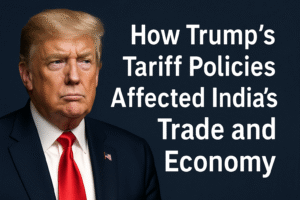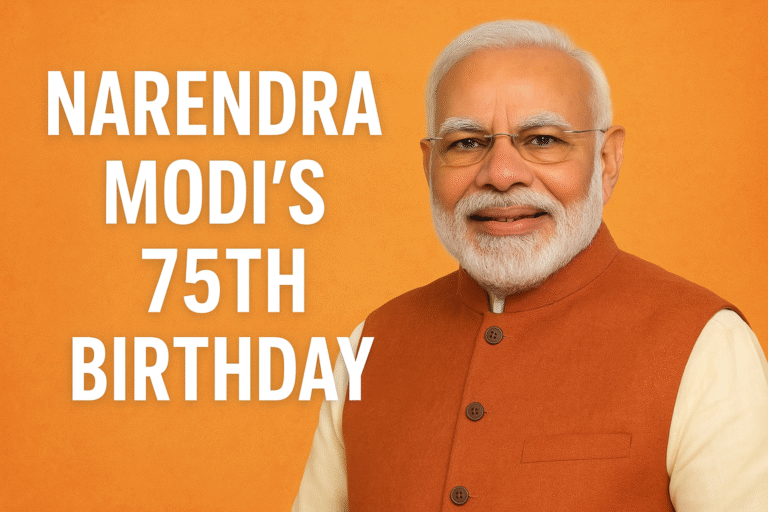How Trump’s Tariff Policies Affected India’s Trade and Economy
Trade between countries plays an important role in the global economy. It allows countries to buy and sell goods and services that they need or produce in surplus. However, sometimes countries take steps to protect their own industries. One such step is putting tariffs or taxes on imported goods. During the presidency of Donald Trump in the United States, tariffs became a major part of his trade policy. These tariffs had an effect not only on countries like China but also on India.

What Are Tariffs
Tariffs are taxes that a government places on goods coming from other countries. When a tariff is added, the imported goods become more expensive. This is usually done to protect local industries and encourage people to buy products made in their own country. While this may help domestic industries in the short term, it can also lead to trade tensions and even trade wars.
Trump’s Trade Policy
Donald Trump became the President of the United States in the year two thousand seventeen. One of his key promises was to protect American businesses and jobs. He believed that other countries were taking advantage of the United States in trade. To fix this, his administration started adding tariffs on goods from several countries, including allies like India.
The Trump administration removed India from a program called the Generalized System of Preferences, also known as GSP. This program allowed India to export many goods to the United States without paying any tariffs. By ending this benefit, Indian exporters had to start paying extra taxes, making their products more expensive in the American market.
Why Did Trump Remove India from the GSP
The Trump administration said that India was not giving American companies fair access to its markets. They pointed to issues such as restrictions on American dairy and medical device products. Trump also wanted India to reduce import duties on products like motorcycles and whiskey. When India did not make the changes the US wanted, the Trump government decided to take action by ending India’s benefits under the GSP.
India’s Response
India responded to the tariffs by adding its own tariffs on several products coming from the United States. These included items like almonds, apples, and walnuts. This was done as a countermeasure to balance the losses caused by American tariffs. While both sides hoped to reach a trade agreement, tensions remained throughout the Trump presidency.
Impact on Indian Businesses
The removal of GSP benefits affected many small and medium-sized businesses in India. Products like textiles, jewelry, leather goods, and engineering items became more expensive in the American market. This led to a drop in exports and created challenges for Indian businesses that depended on the US for sales. Some companies tried to find new markets, while others had to cut costs or reduce their workforce.
Wider Economic Effects
The tariffs and trade tensions had a wider impact on the relationship between India and the United States. While both countries continued to cooperate in other areas like defense and technology, the trade conflict added strain. At the same time, India started to focus more on becoming self-reliant and reducing dependence on foreign markets.
What Happened Later
After Trump left office in the year two thousand twenty-one, there were hopes that the new administration under President Joe Biden would restore the trade benefits. Some discussions did take place, but by then, India had already started adjusting to the changes.






